- balloon wrench
- keys on "12" And "13"
- jack
- stand
- pliers
- goatee
Install support bars under the front wheels.
Remove the rear wheel.
Check that the parking brake lever must be pushed all the way down (the car is disinhibited).
Clear the brake mechanism of dirt.
The minimum allowable thickness of the friction linings of the pads is 1.5 mm. If the pads are worn to 1.5 mm or more, replace the pad sets.
Attention! It is unacceptable to use gasoline, diesel fuel or any other mineral solvents for cleaning brakes.
Attention! The pads are replaced on both sides of the car.
Attention! It is unacceptable to replace the front and rear pads with each other, as well as between the left and right wheels. This can lead to uneven braking.
Attention! If the brake fluid level in the reservoir is at "MAX" or approaches it, pump some of the fluid out of the tank.
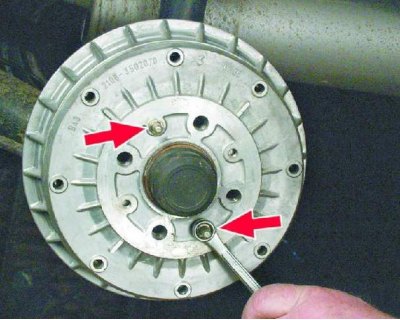
1. Loosen the two guide pins.
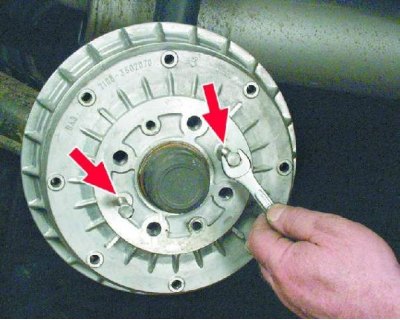
2. Remove the brake drum. If you have difficulty with removal, screw two M8 bolts into the threaded holes of the drum and press it, screwing the bolts evenly.
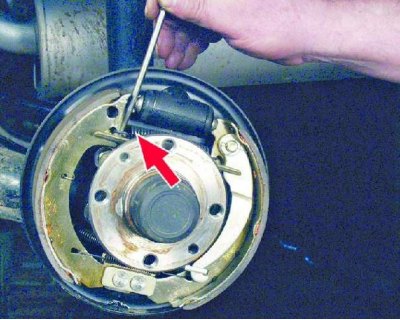
3. Remove the upper return spring with a barb or pliers.
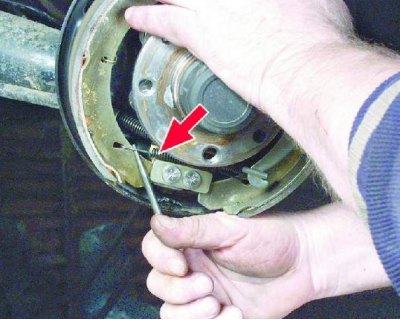
4. Remove the lower return spring in the same way.
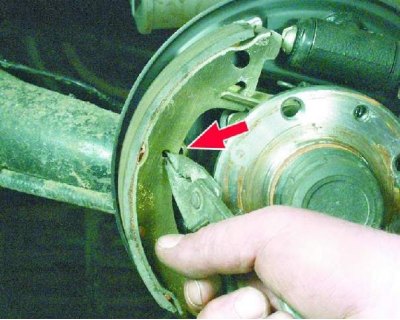
5. Remove the front shoe guide spring.
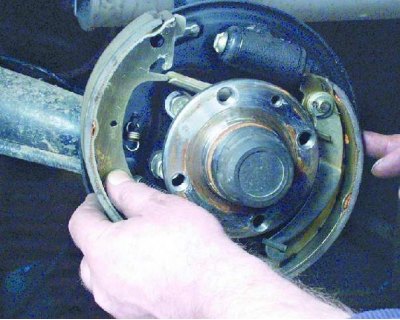
6. Remove the front pad.
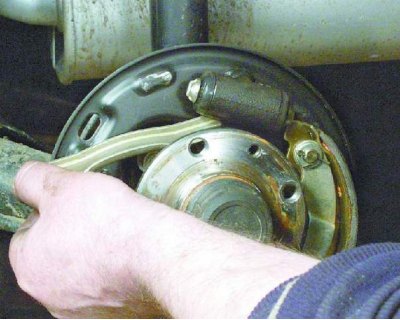
7. Remove the spreader bar.
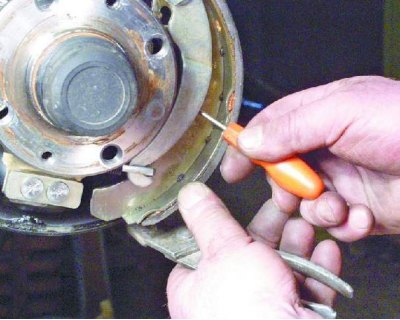
8. Remove the rear shoe guide spring.
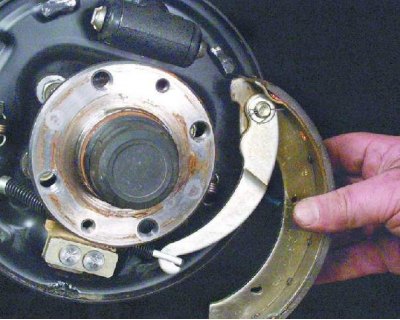
9. Remove the rear shoe by disconnecting the drive lever from the parking brake cable end.
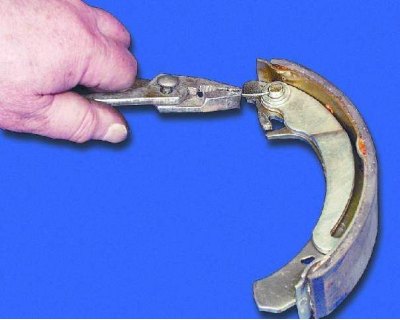
10. Remove the cotter pin from the rear block.
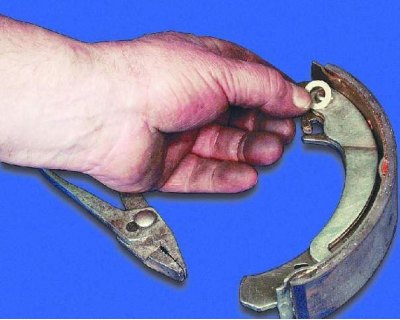
11. Remove the support washer.
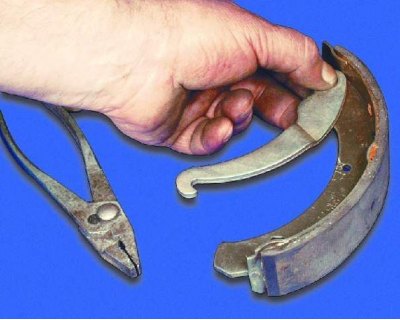
12. Press down on your finger and remove the drive lever from the block. Remove your finger from the block.
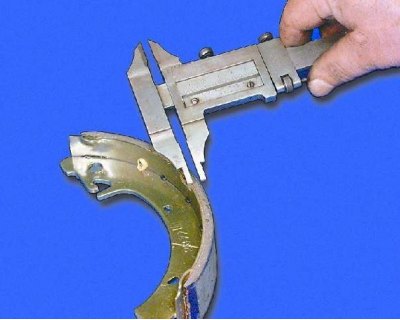
13. Check the condition of the brake pads. Replace them in the following cases: a) lining thickness less than 1.5 mm; b) the surface of the pads is oiled; V) the friction lining is loosely connected to the base. Linings should not have deep grooves and chips.
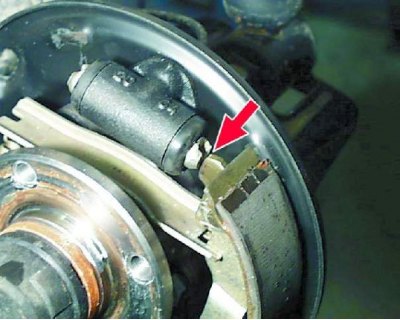
14. Install new pads in the reverse order of removal. When installing, insert the upper socks of the pads into the grooves of the piston.
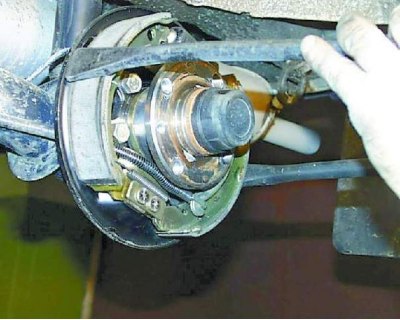
15. Before installing the drum, bring the brake shoes together with two pry bars in order to move the pistons to the center of the cylinder.
